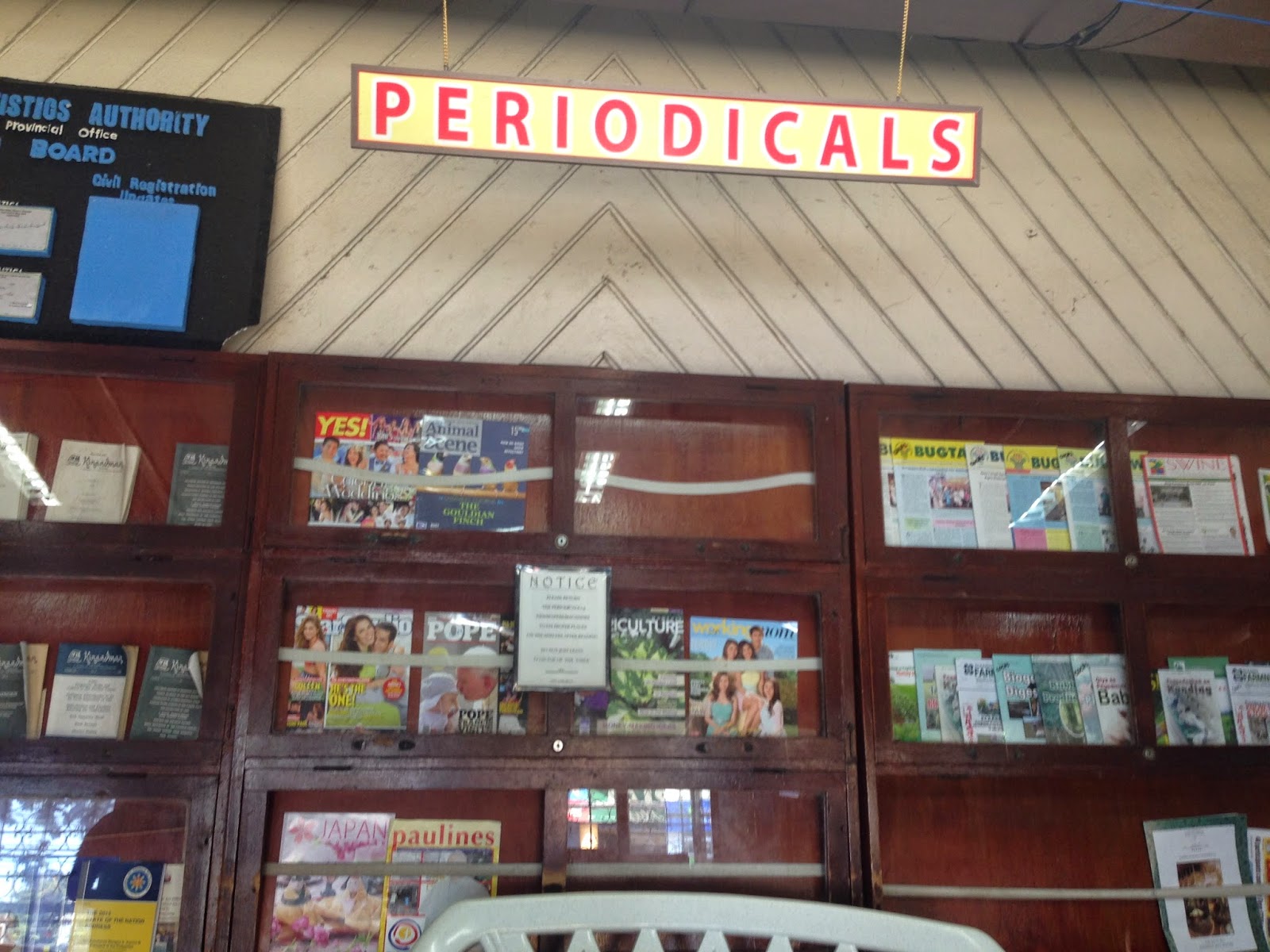Recently, I went to Cagayan de Oro in the
Philippines to visit family over Easter, and I was lucky enough to spend some
time in the local public library. As a recent graduate in both information
studies and international studies, I have a special interest in the differences
and similarities in library services between Australia and other countries. I
was eager to use part of my trip to explore all the libraries in the local
area, though due to a strict dress code (no shorts or short-sleeved t-shirts
allowed!) I was unable to visit the adjacent Xavier University Library in
addition to the public one.
Cagayan de Oro City Library is situated in the
heart of the city, and offers community access to research materials,
periodicals, online services and printing, and a collection of fiction and non
fiction materials for both children and adults. Considering it is only a small
library, I was impressed by the size of the children’s book collection, offering both fiction and learning materials
specifically for primary aged children. The room was also well set up for
conducting children’s activities and
classes, with desks, a whiteboard, CD players and televisions. Unfortunately,
no classes or activities are running at this time due to a lack of funding.
The Children's room
The periodicals at CDO Library
I was also interested in the Filipiniana
Reference section, which offers members of the public the opportunity to
research both local and national history from a rather diverse collection. As
the Philippines is officially bilingual, the local library offers texts in the
local dialect of Cebuano, the national language of Tagalog and in English.
Having volunteered for about four months at Hurstville City Library in Sydney -
another local library with an ethnically and culturally diverse community
- I have come to really appreciate the
value of multilingual services in providing information access and creating a
stronger and more inclusive local community. The inclusion of different
language texts, and the Filipiniana Reference section, all point towards the
library’s commitment to
providing information access across all language barriers in the local area.
CDO’s
Filipiniana Reference section
CDO Library Computers
While in the library,
I spoke with the technical librarian Darlaine about the future of Cagayan de
Oro library and what changes she would like to see moving forward. Darlaine
would like to reach out more to members of the public by offering classes and
services, especially to those who don’t have access to computers, books or other
education materials. She would especially like to organise a summer
storytelling program for young children, since schools in the Philippines has
long summer breaks between April and June. She also would like to gain more
sponsoring in order to gain more computers, since
public access to the internet is a priority in Cagayan de Oro City.
For me, the experience of visiting Cagayan de Oro City library has further reiterated the importance of libraries in bringing literacy and technology programs to the community. Australian libraries are very lucky to be able to fund a diverse range of programs, such as the ones I have seen as a volunteer for Hurstville City Library in Sydney. I would like to see Darlaine and the other librarians in Cagayan de Oro achieve their goal of raising funding for these types of programs in the future.
Darlaine,
technical librarian at CDO library
Darlaine is hoping to
attend the Tech 4 Ed conference this year, which is tied with the American
Library Association. If selected by a committee, she will complete training
beforehand at the National Library of the Philippines in Manila. I
wish her all the best!
Eleanor Gerrard
Event Officer, ALIA Sydney







